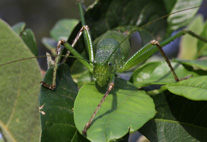Abstract
This is the first comprehensive review of the genus Hyperoche since that of Bovallius (1889). This study is based primarily on the extensive collections of the ZMUC but also on more recent collections in other institutions. Seven valid species are recognised in this review, including one described as new to science. Two new characters were discovered; the first two pereonites are partially or wholly fused dorsally and the coxa of pereopod 7 is fused with the pereonite. These two new characters, combined with the knife-shaped carpus of the gnathopoda and the laminate mandibular molar, help to further distinguish this genus amongst the Hyperiidea. Partly as a result of establishing these distinctive characters, a new genus, Prohyperia gen. nov. is proposed for H. shihi Gasca, 2005 because it has characters not consistent with Hyperoche or the closely related genus Hyperia, to which it also bears some resemblance. Hyperoche medusarum and H. luetkenides, although morphologically similar, are considered separate species, with H. medusarum restricted to the colder waters of the northern Hemisphere and H. luetkenides to the Southern Ocean and Antarctic waters. Hyperoche cryptodactylus, still only known from the unique type, is considered a synonym of H. luetkenides because the character distinguishing it, the retractile dactyl of gnathopod 2, also occurs in some specimens of H. luetkenides and has also been found in other species of Hyperoche. Some specimens also have some pereopoda with partly or wholly retracted dactyls, although there is no pattern to the occurrence. In addition to the above the following species are also considered valid, H. martinezii, H. mediterranea and H. picta, found mainly in the tropical and temperate regions of the Atlantic and Pacific Oceans, and H. capucinus, restricted to the region between the Antarctic Polar Front and the Antarctic Continent. One new species, H. macrocephalus sp. nov., is described from the tropical eastern Indian Ocean and the Mediterranean Sea. All species are described and illustrated and a key is provided to facilitate their identification.

